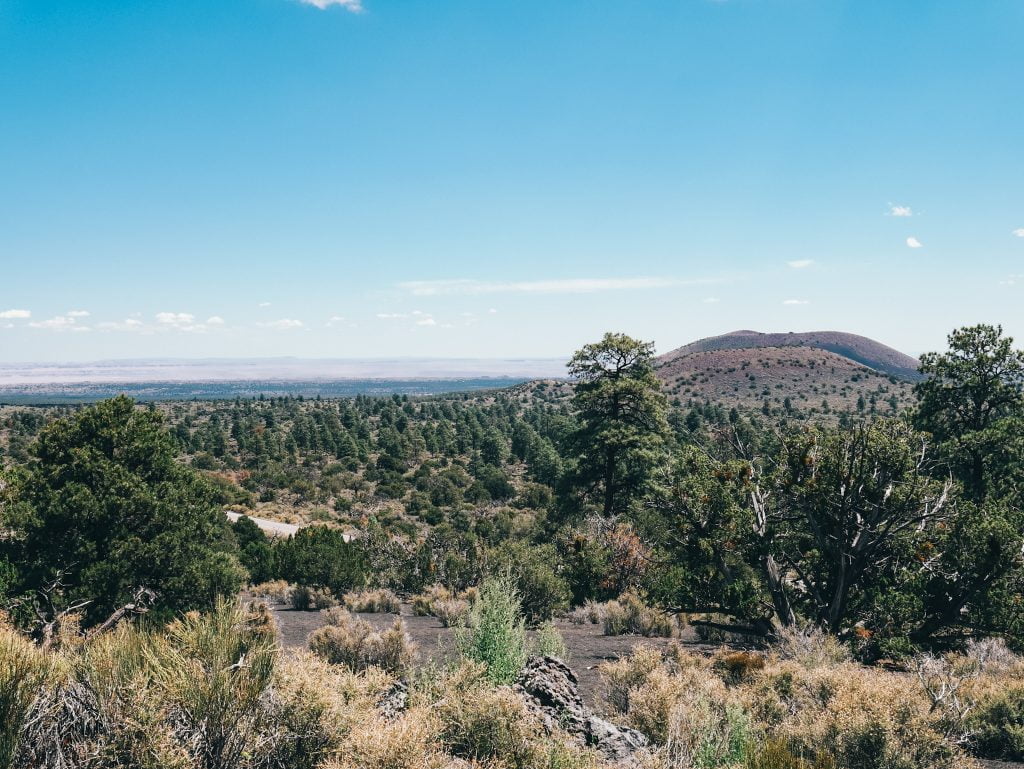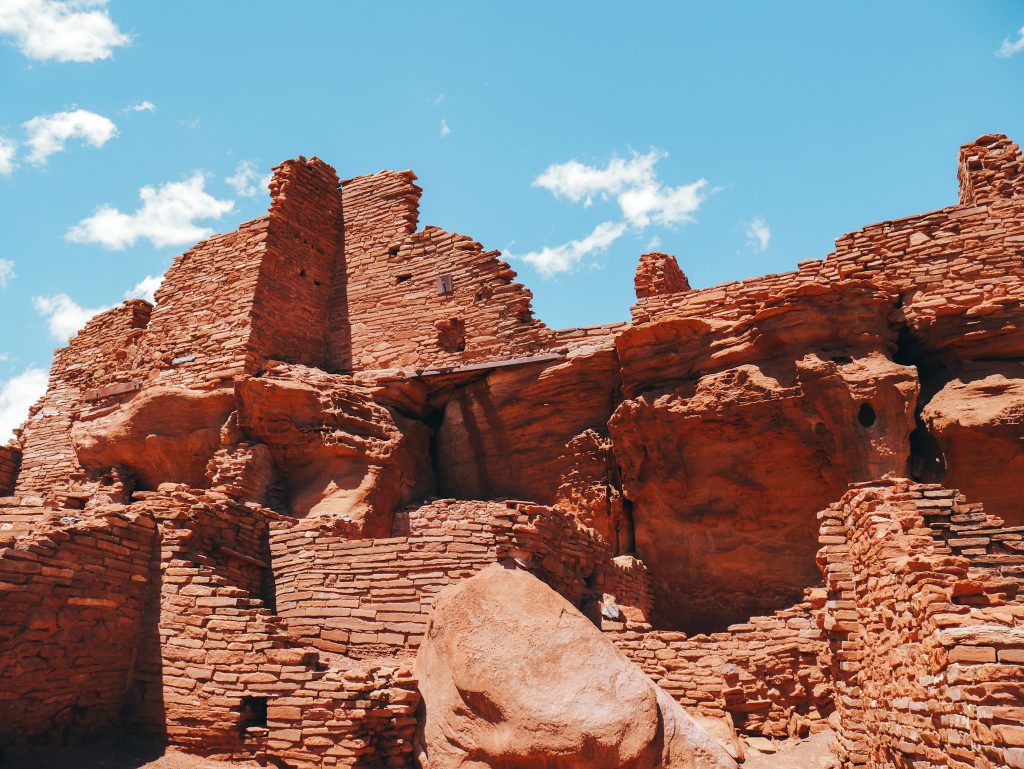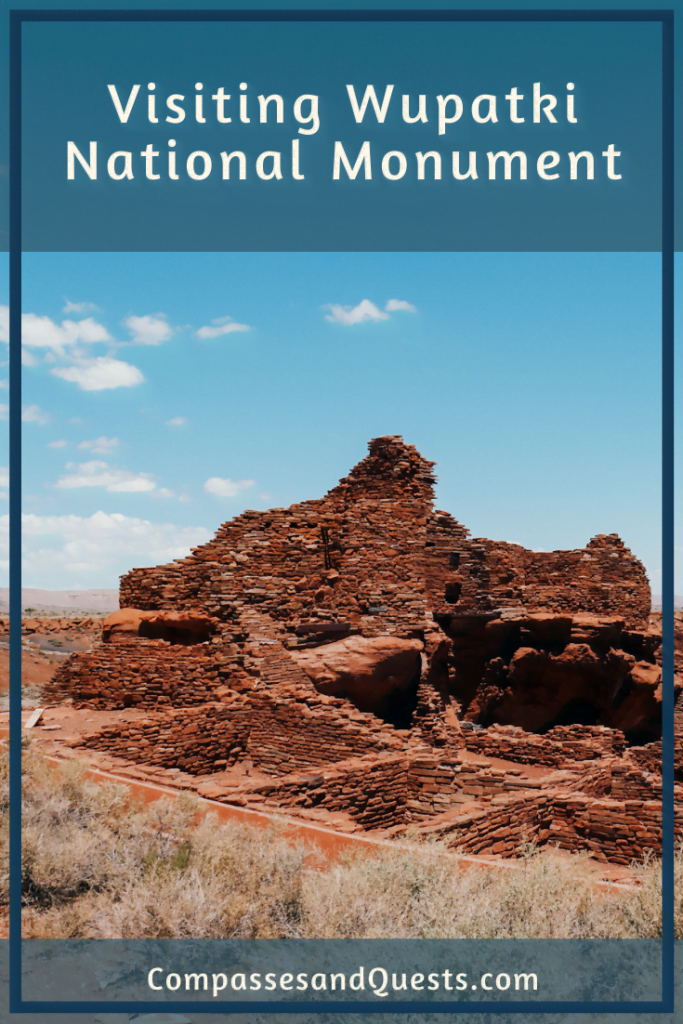Wupatki National Monument holds evidence of some of Arizona’s long, rich history. The monument is scattered with many old Native American Puebloan dwellings and was once a thriving place of trade, agriculture, and bustling daily life. If you’re looking for an easy activity, some pretty desert scenery, and a deeper dive into the history of the area, Wupatki National Monument is a great place to stop.

A Little Bit of History
Human activity in the area dates back thousands of years, but the larger pueblos within Wupatki National Monument were first built by Anasazi and Sinagua peoples approximately 800 years ago. Agriculture once flourished due to the soil enriched by volcanic deposits from an explosion of the nearby volcano. The hundreds of dwellings in the area suggest that this really was a bustling place.
While the sandstone dwellings are no longer occupied, their history has been preserved in the stories of some of the surrounding tribes, the tales of explorers, and the ruins and artifacts that remained. To learn more about this unique place come check out the museum and walk among the walls yourself!
Getting to Wupatki National Monument
Wupatki National Monument lies just outside of Flagstaff between there and Cameron and is not far off the highway, making it very easily accessible. From Flagstaff, head north on Highway 89. First, you’ll come to the turnoff for Sunset Crater Volcano National Monument. We chose to turn in here to purchase our annual parks pass at the entrance booth and take the more scenic route through the high desert. The main roads through Sunset Crater lead into Wupatki National Monument.
If you would rather take the highway or are coming from the north, you can alternatively turn on Loop Rd (395), which sits further north than the Sunset Crater entrance.

Fees
A pass is required to enter Wupatki National Monument. It costs USD$25 per private vehicle, which covers seven consecutive days at both Wupatki and Sunset Crater. You can also enter with an annual Flagstaff Monuments pass, which covers entrance to a few monuments in the area. These passes can be purchased online and downloaded beforehand or purchased on location. If you plan to buy a pass upon arrival, note that they only take card.
Our America the Beautiful Pass had recently expired, so we purchased a new one at the Sunset Crater entrance as we were headed to the North Rim of the Grand Canyon and Glen Canyon Recreation Area afterwards. This annual pass costs $80 is absolutely worth it if you visit several parks, monuments, or recreation areas in a year.

Exploring Wupatki National Monument
While there are many ruins around Wupatki National Monument, only several are open to be explored by the public. Please leave everything as you find it and do not climb on the ruins. This will help preserve them for the many years to come.
Trails are open from sunrise to sunset while the visitor’s center is open from 9 a.m. to 4:30 p.m. with a closure from noon until 1 p.m. Check with the monument website updates, holiday hours, and other closures. Please note that pets are not permitted on the trails.

Wupatki
We started at the Wupatki Pueblo, which is adjacent to the visitor’s center. We don’t always stop at visitor’s centers, but we definitely recommend stopping here. There is a nice museum that provides a lot of information on the area and the people that occupied it. There is also a small shop, restrooms, and air conditioning for a little relief from the desert heat. The staff are happy to answer any questions you have on the monument.
Behind the visitor’s center is the trail to the Wupatki ruins. This is the largest free-standing pueblo in Arizona, consisting of over 100 rooms. The trail to the ruins is paved or groomed dirt and only half a mile round trip. Here, you can walk into some of the old rooms and get a great view of the Painted Desert. There are also the remains of a ball court and the mysterious blow hole below the main dwelling. Expect to spend 45 minutes to an hour exploring the Wupatki Pueblo and museum.

Wukoki
Not far from the visitor’s center is the Wukoki Pueblo. These ruins stand tall on a large slab of sandstone, offering a pretty view over the desert. Here you’ll be able to enter some of the old rooms and walk the little loop around the structure. This impressive tower sits a very short ways from the parking area and takes 15-30 minutes to explore.

Citadel and Nalakihu Pueblos
After Wukoki, we drove back to Loop Rd and headed towards the northern entrance to Wupatki National Monument. We came to the small parking area for Citadel and Nalakihu Pueblos and began hiking up the hill. The 0.2-mile (round trip) trail is well maintained and not very steep, but the temps were over 100˚F at that point, making it feel a bit more difficult.
First, you’ll come to Nalakihu, which is a small house at the base of the hill. Continue past it a short ways and you’ll end up on top of the citadel. Terraces, seeds, and other artifacts found in the area show that it was a popular spot for agriculture. There isn’t much left of both of these ruins, but the top of the Citadel Pueblo overlooks a small crater and you can see some other surrounding structures on the nearby hills. This area also takes only 15-30 minutes to explore.

Lomaki and Box Canyon Pueblos
A short ways down a road branching off the right side of Loop Rd (if you are heading west towards the northern entrance) sit the Lomaki and Box Canyon Pueblos. This easy gravel trail is about a half mile round trip.
Box Canyon Pueblo is first visible off to the right and sits at the edge of the Box Canyon fault or wash. There are two structures on either side of the little canyon. After exploring this spot, continue down the trail towards Lomaki. This house contains several rooms. Again, take note of the neighboring hills where you can see a few other ruins and take a closer look at the sandstone formations to see some fossils!
After about 30 minutes of exploring this area, we headed back to Loop Rd and the northern entrance to end our morning in Wupatki National Monument.

What to Bring to Wupatki National Monument
Pass or Payment Method: Pack your previously purchased pass or a card to purchase one.
Water: It gets incredibly hot here in the summer and there is no running water at each of the stops aside from the visitor’s center.
Sun Protection: There is little to no shade throughout the monument, so bring your hat, sunglasses, and/or sunscreen.
Comfortable Shoes: The trails aren’t too extreme to require hiking boots, but comfortable walking shoes are a good idea.
Food: Take a break and enjoy the views of Wupatki National Monument with a snack. There is the Doney Mountain Picnic Area if you want to pack a lunch and hang out a little longer.
Camera: Capture the ruins and wildlife with your camera, but note that drones are not permitted.
Like this Post? Pin it!




